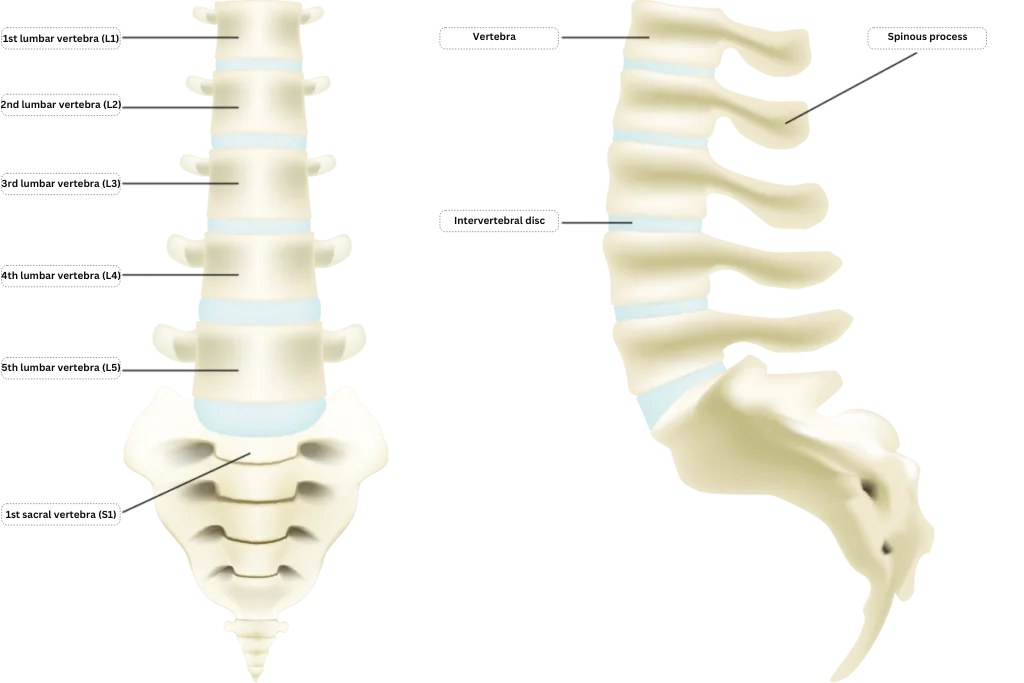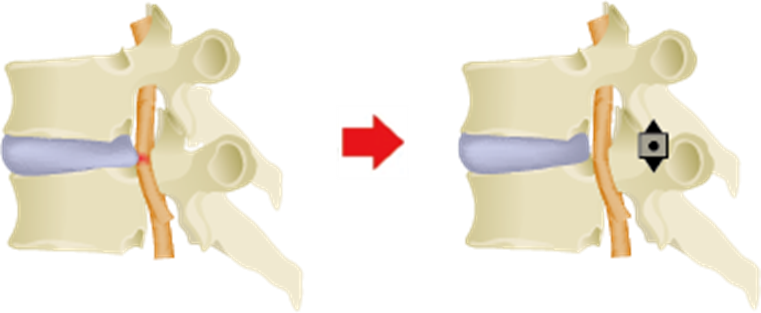Column What Exactly is the Fifth Lumbar Vertebra? If You’ve Heard the Name Before, But Are Not Sure of What It Is…
July 26, 2024
When we talk about the lumbar spine, we often hear people talking about the “fifth lumbar vertebra”.
In this article, we will explain what the fifth lumbar vertebra is.
What is the fifth lumbar vertebra?
The fifth lumbar vertebra is located at the bottom of the lower back. And below the fifth lumbar vertebra is the sacrum, which connects to the hips.

The fifth lumbar vertebra is the part of the lumbar spine that is most likely to be affected, and various diseases are likely to occur there.
Medical conditions associated with the fifth lumbar vertebrae
Disc herniation
The most common lumbar disease is disc herniation. This particular condition is most likely to occur in the discs between the fourth and fifth lumbar vertebrae, or between the fifth lumbar vertebrae and the sacrum.
If a herniated disc develops in the discs above or below the fifth lumbar vertebra, and the nerve root is compressed and inflammation occurs, this may cause pain in the lower back, pain or numbness in the buttocks and legs, and a loss of sensation or difficulty in using one’s legs.
Spondylolisthesis
Spondylolisthesis is a condition in which the bones become misaligned due to abnormalities in the intervertebral discs.
Spondylolisthesis is most likely to occur in the fourth lumbar vertebra, followed by the fifth lumbar vertebra. Slipped vertebrae cause lower back pain and pain and numbness in the lower limbs.
Spondylolysis
Because the fifth lumbar vertebra is prone to strain, it is also prone to developing spondylolysis.
The reason the fifth lumbar vertebra is prone to spondylolysis is because the spine is tilted at a large angle, and it is a part of the lower back that is particularly prone to strain.
If spondylolisthesis worsens, it may progress to spondylolysis. When spondylolisthesis or spondylolysis occur, bone deformation also emerges, and the body becomes even more susceptible to strain, which may worsen symptoms or even make it impossible to walk.
Diagnosis and treatment methods
An MRI or X-ray examination is necessary to diagnose the various disorders affecting the fifth lumbar vertebra. The MRI images enable us to identify if there are any changes in shape, compression on the nerves, damage, inflammation, etc. in the intervertebral discs, nerves, ligaments and joints that are most commonly associated with lower back pain. In turn, the X-ray images mainly allow us to check the condition of the bones.
If an accurate diagnosis can be reached and the symptoms are relatively mild, treatment is often provided either through medication or by wearing a corset. If there is no improvement after continued conservative treatment, surgical intervention is then suggested.
Treatment at our clinic
We use the Cellgel method for herniated discs and the Florence method/Q-Florence method for spinal stenosis with sciatica.
The Cellgel Method
The Cellgel method is a treatment that repairs damaged discs.
A drug that fills the cracks in the intervertebral disc is injected, and as it becomes gel-like and fills the cracks, it prevents further degeneration of the intervertebral disc and is a fundamental treatment.
The volume of the disc is not reduced, and the drug remains in the disc as a gel-like implant after treatment, thus preserving the disc.
The Cellgel method is indicated for both lumbar disc degeneration and cervical disc degeneration.

The Florence Method
The Florence method is indicated in cases where disc degeneration has progressed and is accompanied by conditions such as spinal canal stenosis and spondylolisthesis.
By inserting a special spacer between the spinous processes of the lumbar vertebrae, it is possible to stabilize the vertebral bodies, widen the spinal canal, and reduce the protrusion of the intervertebral disc and thickening of the Ligament Flavum, while maintaining the rotation and flexion of the spine. By widening the narrowed spinal canal, symptoms such as pain and numbness can be relieved.

The Q-Florence Method
The Q- Florence method is a minimally invasive treatment with low risk that can be used for spinal stenosis, spondylolisthesis, and lumbar instability.
A specialized device is inserted percutaneously to stabilize the unstable spine and widen the narrowed spinal canal to treat spondylolisthesis.

If you are suffering from lower back pain, please consider a consultation at our clinic.



